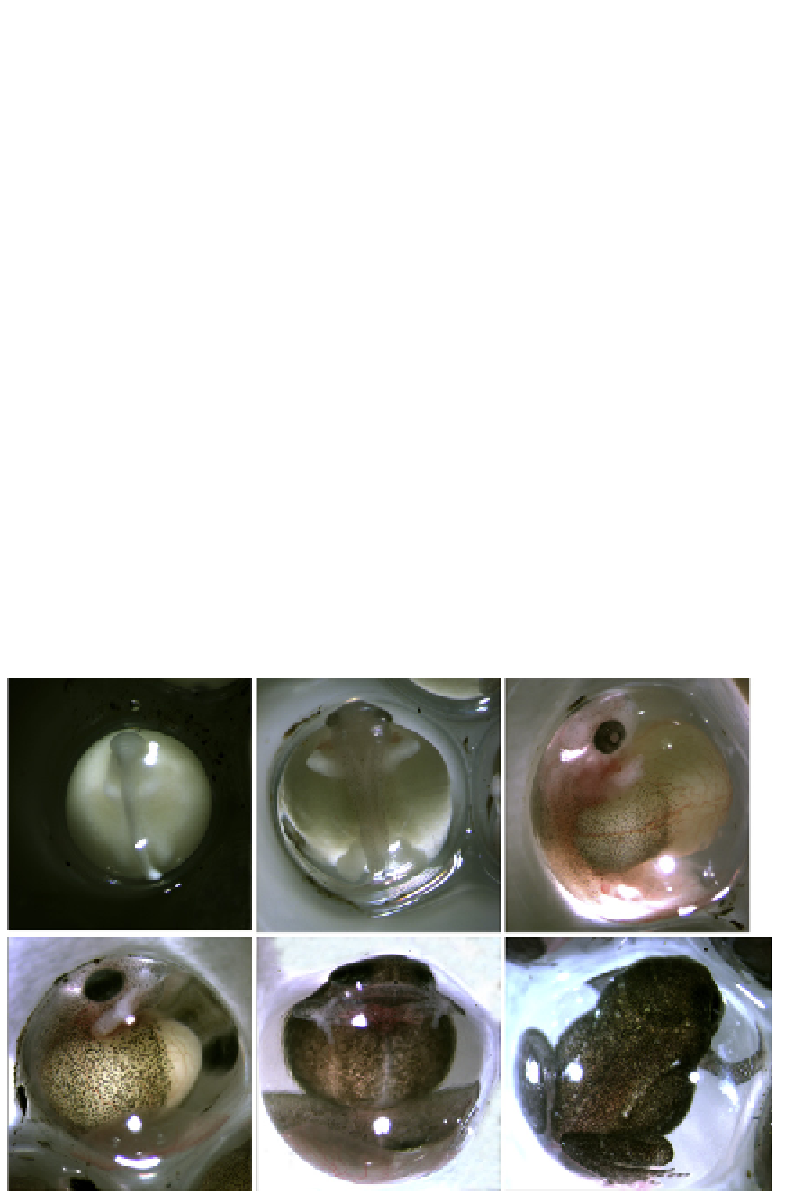Biology Reference
In-Depth Information
requirement for a greatly increased yolk content of the egg. Most direct
developers have eggs that are greater than 3 mm in diameter, as compared
to 1.3-1.8 mm diameter eggs, common among frogs with tadpoles (
Callery,
Fang, & Elinson, 2001; Thibaudeau & Altig, 1999
). A notable exception is
the direct developing
Sooglossus gardineri
, found in the Seychelles, with an
egg diameter of only 1.8 mm (
Thibaudeau & Altig, 1999
).
With respect tomaximal size, frog egg size is constrained, probably because
of processes of cleavage and gastrulation (
Buchholz et al., 2007; Elinson, 2009;
Elinson & Beckham, 2002
). Although there are exceptions, most species have
eggs less than 5 mm in diameter (
Duellman&Trueb, 1986; Elinson&del Pino,
2012; Thibaudeau&Altig, 1999
).
E. coqui
is fairly typical for a direct developer,
with a 3.5 mm egg and a hatched froglet with a snout-vent length of 6 mm.
Direct developers have the correlated suite of characters of small numbers
per clutch of large eggs which develop into small froglets.
As a result of this large egg, the appearance of the early embryo is a set of
dorsal axial structures (neural tube, notochord, somites) resting on a ball of
yolk (
Fig. 9.1
). In addition, different direct developers tend to have the early
TS4
TS7
TS9
TS10
TS13
TS15
Figure 9.1 Direct development of Eleutherodactylus coqui. E. coqui develops on land in
jelly capsules brooded by the father. These photographs, taken at the same magnifica-
tion, show Townsend
-
Stewart (TS) stages of embryos within their capsules. Limb buds
are apparent as early as TS4, about 4 days after fertilization. After 3 weeks, the TS15 frog-
let is ready to hatch.

